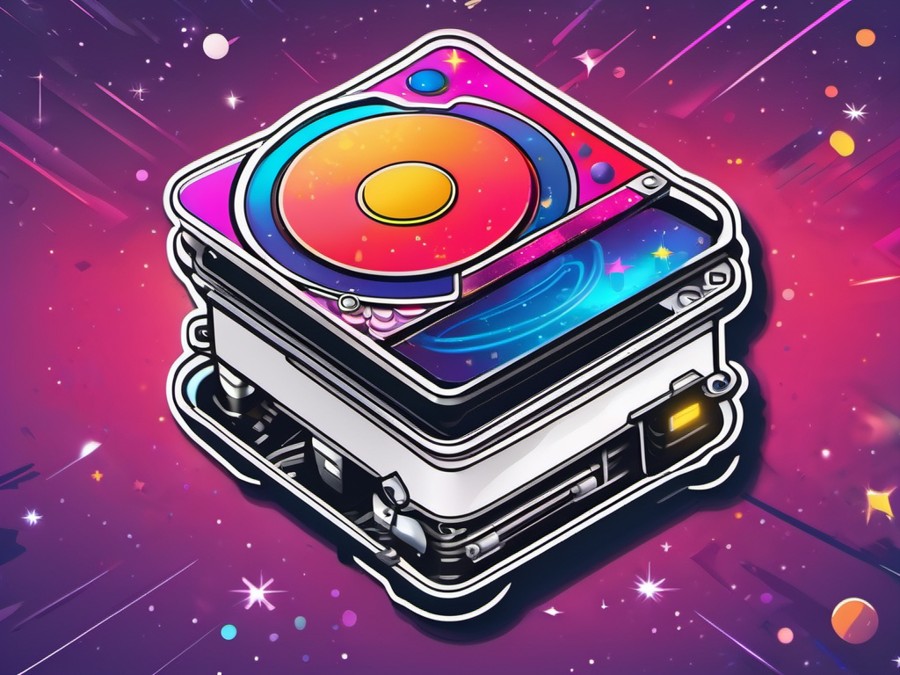· Charlotte Will · Blank Media · 7 min read
What is the difference between SD and microSD cards?
Discover the key differences between SD and microSD cards, including size, speed, compatibility, and performance metrics. Learn which card type is best for your needs.

When it comes to storage solutions for your devices, you’ll often need to decide between SD and microSD cards. But what exactly are the differences between these two? In this comprehensive guide, we’ll break down the key differences and help you choose the right memory card for your needs.
Understanding SD Cards
What is an SD Card?
An SD (Secure Digital) card is a type of memory card used for storing data. It’s a popular choice due to its versatility and wide compatibility with various devices. SD cards come in three types:
- SDSC (Standard Capacity): Up to 2GB
- SDHC (High Capacity): Between 4GB and 32GB
- SDXC (eXtended Capacity): Between 64GB and 2TB
Advantages of Using SD Cards
Wide Compatibility: SD cards are compatible with a wide range of devices, including digital cameras, camcorders, smartphones, computers, and more. Larger Capacity Options: SD cards offer larger storage capacities, making them ideal for high data storage needs. Ease of Use: In devices with dedicated SD card slots, you don’t need an adapter to use the card directly.
Disadvantages of SD Cards
Larger Physical Size: The larger size can make it less suitable for devices where compactness is crucial, like smartphones. Potential for Easier Damage: The larger size may also increase the risk of physical damage.
A Closer Look at microSD Cards
What is a microSD Card?
A microSD card is a smaller version of the SD card, specifically designed for compact devices like smartphones and tablets. Like SD cards, they also come in various types:
- microSDSC (Standard Capacity): Up to 2GB
- microSDHC (High Capacity): Between 4GB and 32GB
- microSDXC (eXtended Capacity): Between 64GB and 2TB
Advantages of Using microSD Cards
Compact Size: Perfect for use in smaller devices where space is a premium. Versatility Through Adapters: With adapters, microSD cards can be used in devices that support SD cards. Reduced Risk of Physical Damage: The smaller size means less chance of physical damage.
Disadvantages of microSD Cards
Requires Adapters for Compatibility: For use in non-microSD slots, you’ll need an adapter. Potential Limitations in Transfer Speed and Performance: Depending on the device and card, you might encounter performance limitations.
Key Differences: Size, Speed, and Compatibility
Physical Size Difference
At a glance, the physical size difference is evident. SD cards are approximately 24mm x 32mm x 2.1mm, while microSD cards are about 15mm x 11mm x 1.0mm. This size difference impacts the compatibility and usability in different devices.
Speed Comparison: Read and Write Speeds
Both SD and microSD cards have different speed classes, indicating their data transfer rates. Common classes include Class 2, Class 4, Class 6, UHS-I (Ultra High Speed), and UHS-II. Generally, SD cards might offer faster read/write speeds due to their larger size and design, but this can vary based on the specific card model and device compatibility.
Device Compatibility and Usage
Compatibility: Not all devices support both SD and microSD cards. For instance, some older cameras might only support full-sized SD cards, while modern smartphones often use microSD cards. Usage: For photography and videography, a high-capacity SD card might be more suitable. For everyday use in smartphones and tablets, a microSD card with an adapter can offer versatility.
Performance Metrics: Speed Classes and UHS Ratings
Understanding Speed Classes
Speed classes are indicators of the minimum write speed for a memory card. Common classes include:
- C2: 2MB/s minimum write speed
- C4: 4MB/s minimum write speed
- C6: 6MB/s minimum write speed
- C10: 10MB/s minimum write speed (UHS-I)
- U3: 30MB/s minimum write speed (UHS-II)
Real-World Applications: Higher speed classes are essential for high-resolution video recording, continuous shooting in cameras, and high-speed data transfers.
UHS (Ultra High Speed) Ratings
Definition: Ultra High Speed or UHS is a faster interface standard for SD cards, crucial for high-speed data transfers. Types: UHS-I offers speeds up to 104 MB/s, while UHS-II can reach up to 312 MB/s. Applications: UHS ratings are particularly important for videographers and photographers who need to handle large data files quickly.
Real-World Examples: Choosing the Right Card
Photography and Videography Needs
For photography, especially in DSLR or mirrorless cameras, an SD card often provides the necessary capacity and speed. For instance, a high-speed UHS-II SD card can handle 4K video recording and continuous burst shooting efficiently.
For videography, both SD and microSD cards can be used depending on the specific setup. Some professional cameras support microSDXC cards directly, especially those designed for compactness and high-speed data transfer.
Everyday Use in Smartphones and Tablets
When it comes to everyday use in smartphones and tablets, a microSD card is often the go-to choice due to its compact size. With an adapter, you can easily transfer data between your smartphone and computer.
Adapters: Bridging the Gap Between SD and microSD Cards
Types of Adapters Available
There are several types of adapters to consider:
- Standard SD Adapter: Allows microSD cards to be used in full-sized SD card slots.
- USB Adapter: Enables microSD cards to be directly accessed via a USB port on computers or other devices.
- MicroSD to SDHC/XC Adapter: Specifically designed for use with microSDHC/XC cards in full-sized SD card slots.
When and How to Use Adapters
Practical Scenarios: Adapters are essential when you need to transfer data between devices that only support full-sized SD cards. For example, if your camera only supports SD cards but you prefer using a microSD card in your smartphone, an adapter will bridge that gap. Tips for Safe Usage: Always ensure the adapter is securely inserted and that you handle it with care to prevent data loss or physical damage.
Limitations and Performance Concerns
Physical Durability: Size Matters
Due to their larger size, SD cards might be more prone to physical damage compared to microSD cards. Handle them with care and avoid exposing them to extreme temperatures or magnetic fields.
Performance Limitations of microSD Cards
Depending on the device and card model, you might encounter limitations in transfer speed and overall performance with microSD cards. To overcome this:
- Choose High-Quality Products: Opt for reputable brands and high-speed class cards.
- Use UHS Ratings: Ensure your microSD card has the appropriate UHS rating for your needs.
FAQs: Addressing Common Concerns
Can I Use a microSD in an SD Slot?
Yes, you can use a microSD card in an SD slot with the help of a standard adapter. However, ensure your device supports the card’s capacity and speed class to avoid any compatibility issues.
Is There a Performance Difference Between SDHC and microSDXC?
Yes, there can be performance differences. SDHC cards typically support Class 2 or higher speeds and have a capacity limit of up to 32GB. microSDXC cards, on the other hand, support higher speed classes (UHS-I, UHS-II) and can store up to 2TB.
Are All Devices Compatible with microSD Cards?
Not necessarily. Devices need to have a dedicated microSD slot for direct compatibility. If not, you can use an adapter, but ensure the device supports the card’s capacity and speed class.
Can a microSD Card Be Used Without an Adapter?
Yes, in devices with dedicated microSD slots. For example, most modern smartphones and tablets have built-in microSD card slots that do not require adapters.
What is the Best Way to Protect My Memory Cards?
Handle them with care, avoid exposing them to extreme temperatures or magnetic fields. Store them in a protective case when not in use, and always eject safely from your device to prevent data loss.
For more specific use cases, read our guide on What is the difference between SD and microSD cards for video recording?. And if you’re interested in other comparisons, check out our articles on What is the Difference Between a UPS and an Inverter? and What is the Difference Between LED and LCD TVs?.




